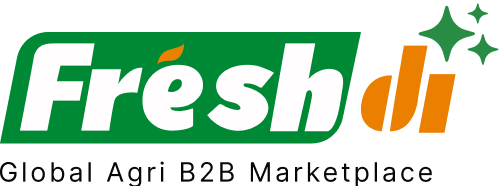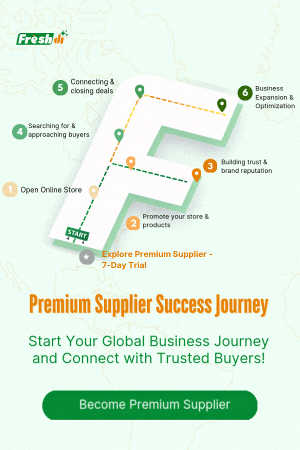Introduction – Current State of Play: The Seaweeds Sector in Vietnam
Vietnam’s seaweed industry is undergoing a major transformation—and it’s happening fast. Imagine standing at the edge of a calm ocean and suddenly seeing waves of change rolling in. That’s what the Vietnamese seaweed sector looks like right now in mid-2025.
Let’s start with the big news: The Ministry of Agriculture and Rural Development (MARD) has set a bold target—500,000 tons of seaweed production annually by the year 2030. It’s not just a number. It’s a national strategy to turn seaweed into a flagship product of the country’s seafood export industry. With Vietnam’s 3,260-kilometer coastline and ideal tropical waters, the country is well-positioned to lead Asia’s seaweed boom.
But there’s more. In October 2024, key stakeholders including ICAFIS, Japi Foods Co. Ltd, and Trường Phát STP came together to support farmers and streamline the supply chain—from seedlings to exports. This is about doing things smarter, not just bigger. A closed-loop value chain means better quality, traceability, and fairer deals for farmers.
Yet, here’s the twist: 90% of the seaweed consumed in Vietnam is still imported. That’s a massive local gap that Vietnamese producers are racing to fill—especially as global demand for seaweed soars, fueled by green food trends and sustainable product sourcing.
But it’s not all smooth sailing. Climate change, pollution, and unpredictable weather patterns are real threats. Without standardized farming methods and better environmental controls, the industry could struggle to grow sustainably.
So, where does that leave businesses? Right in the middle of a fast-moving, opportunity-packed, but complex market. Staying agile and informed is the only way to ride the current wave of change.
Deep Dive – Breaking News: Critical Updates & Their Effects
The seaweed scene in Vietnam is buzzing with activity. Here are the most crucial developments shaping the landscape:
-
New Trade Agreements: Vietnam has recently signed bilateral trade agreements with several EU and Asian countries, making it easier to export processed and raw seaweeds. This has opened up new markets practically overnight.
-
Increased Investment in Tech: Vietnamese firms are beginning to adopt seaweed-specific tech—from automated drying systems to blockchain for traceability. These aren’t just gadgets—they’re game-changers for buyers looking for quality and transparency.
-
Farmer Support Programs: Strategic collaborations between ICAFIS and companies like Japi Foods are giving farmers access to high-quality seedlings and guaranteed buyback programs. That means more consistent supply for global buyers.
-
Domestic Demand Shift: Vietnamese consumers are becoming more health-conscious, and seaweed is being integrated into everything from snacks to cosmetics. Expect demand to spike not just abroad but at home too.
-
Export Bottlenecks Easing: Ports in Quy Nhon and Cam Ranh are getting infrastructure upgrades, helping reduce export delays and logistical headaches.
What does this mean for you if you’re sourcing seaweed? The market is evolving. Fast. But it’s also getting smarter, more transparent, and more competitive.
Top 4 Verified Seaweeds Suppliers in Vietnam – Relevant in the Current Climate
When it comes to choosing a seaweed supplier in Vietnam, quality, reliability, and market alignment matter more than ever. Here are the top four verified suppliers making waves in July 2025, based on data from Freshdi, a trusted B2B platform offering supplier verification, RFQ trends, and real-time market insights.
1. GREEN WORLD IMPORT EXPORT CO., LTD
- Specialization: A wide variety of dried and processed seaweeds
- Export Reach: Asia, Europe, and North America
- Certifications: HACCP, ISO 22000
- Why They Stand Out: Known for consistent quality and strong logistics capabilities; they’ve scaled up operations in response to the 2025 production targets.
2. Vigi Farm Production Company Limited
- Specialization: Natural dried Sargassum seaweed
- Export Reach: Japan, South Korea, and Australia
- Certifications: GMP, Organic-certified
- Why They Stand Out: Focused on clean, natural harvesting methods and environmental sustainability. A go-to for buyers with eco-conscious sourcing goals.
3. Seaweed Vietnam Co., Ltd
- Specialization: Processed seaweed for food and cosmetics
- Export Reach: Western Europe, Middle East
- Certifications: ISO 9001, Halal
- Why They Stand Out: Invested heavily in R&D to create seaweed-based cosmetic ingredients and superfoods. A strong player in value-added products.
4. Blue Ocean Biotech JSC
- Specialization: Seaweed extracts and bioactive compounds
- Export Reach: United States, Canada, Germany
- Certifications: USDA Organic, Kosher
- Why They Stand Out: Positioned at the intersection of biotech and agriculture. Their extracts are used in pharmaceuticals and nutraceuticals.
Dynamic Ranking Note
Keep in mind, supplier rankings on platforms like Freshdi are dynamic. Categories like “Top Supplier of the Month” or “Rising Exporter of the Quarter” reflect real-time performance, buyer feedback, and export activity. Always check the latest rankings before making sourcing decisions.
Market Navigation – Strategic Responses to Today’s Seaweeds Landscape in Vietnam
If you’re sourcing seaweed from Vietnam right now, here are a few things to consider:
-
Shift Toward Domestic Production: With Vietnam aiming to reduce imports and boost local yield, domestic sourcing is becoming more cost-competitive. Buyers who previously imported from China or Korea may find attractive alternatives in Vietnam.
-
Regional Focus: Provinces like Khanh Hoa, Phu Yen, and Binh Dinh are becoming cultivation hotspots thanks to investment and favorable growing conditions. Suppliers from these regions are often more aligned with government development goals.
-
Product-Type Trends: Demand is surging for Sargassum and Kappaphycus—both used in food and industrial applications. If you’re in the food, cosmetics, or pharmaceutical industries, these are the ones to watch.
-
Risk Management: Climate unpredictability means buyers should diversify their supplier base and consider contracts with weather contingency clauses.
-
Sustainability as a Differentiator: More buyers are prioritizing traceability and eco-friendly practices. Suppliers with organic or sustainable certification are climbing the preferred vendor list.
Conclusion – Key Takeaways for Businesses in a Dynamic Market
Let’s wrap this up with some hard-hitting insights.
Vietnam’s seaweed industry in 2025 is no longer just about fishing and drying. It’s about strategy, sustainability, and smart sourcing. With government backing, supply chain modernization, and rising global demand, the opportunities are massive—but so are the risks.
To stay ahead, businesses must:
- Track policy shifts and trade developments.
- Monitor verified suppliers on platforms like Freshdi.
- Focus on sustainability and quality assurance.
- Adapt quickly to regional and climate-driven supply chain fluctuations.
Platforms like Freshdi are more than just directories—they’re intelligence hubs. They offer real-time alerts on RFQ trends, supplier activity, and even market sentiment. For businesses navigating Vietnam’s dynamic seaweed market, that’s not just helpful—it’s essential.
Buyer’s Checklist for July 2025 (Vietnam Seaweed Market Edition)
- ✅ Check supplier certifications (e.g., HACCP, Organic, GMP)
- ✅ Verify sourcing regions for climate impact
- ✅ Use platforms like Freshdi for supplier credibility
- ✅ Prioritize traceability and environmental sustainability
- ✅ Monitor export trends and seasonal yield fluctuations
Future Outlook: What’s Next for Vietnam’s Seaweed Industry?
The next 12–18 months will likely see:
- Expansion of seaweed farming cooperatives
- Introduction of AI-based monitoring systems for farms
- Growth in seaweed-based cosmetics and pharmaceuticals
- Stronger government incentives for exporters
- More trade fairs and matchmaking events, both online and offline
If you’re in the game, now’s the time to plant your flag.
How Freshdi Empowers Smart Sourcing
Freshdi isn’t just a sourcing platform—it’s a strategic partner. Whether you’re a buyer looking for verified suppliers or someone trying to understand RFQ trends after a new trade policy, Freshdi has tools that help you act fast and smart.
From dynamic supplier rankings to data-backed product insights, Freshdi helps you see the bigger picture—and act before your competitors do.
FAQs
1. Why is Vietnam becoming a top destination for seaweed sourcing?
Because of its long coastline, favorable climate, and government-backed production goals. Plus, the country is ramping up its supply chain and export capabilities.
2. What types of seaweeds are most popular in Vietnam?
Sargassum and Kappaphycus are currently leading the charge, especially in food, cosmetics, and industrial applications.
3. How can I verify a seaweed supplier in Vietnam?
Use platforms like Freshdi that offer verified supplier profiles, export data, and buyer reviews.
4. Is sustainability a big deal in Vietnam’s seaweed industry?
Absolutely. Buyers are increasingly looking for traceable, eco-friendly sources. Many suppliers are now getting organic and sustainability certifications.
5. What are some challenges when sourcing seaweed from Vietnam?
Climate risks, limited standardization in farming, and occasional supply bottlenecks. But with the right partners and tools, these can be managed effectively.
References
- Vietnam plans to produce 500,000 tons of seaweed by 2030 – Tridge
- Experts urge a high-value chain for seaweed – Vietnam News
- Seaweed industry hesitant in production and processing – Vietnam Agriculture


